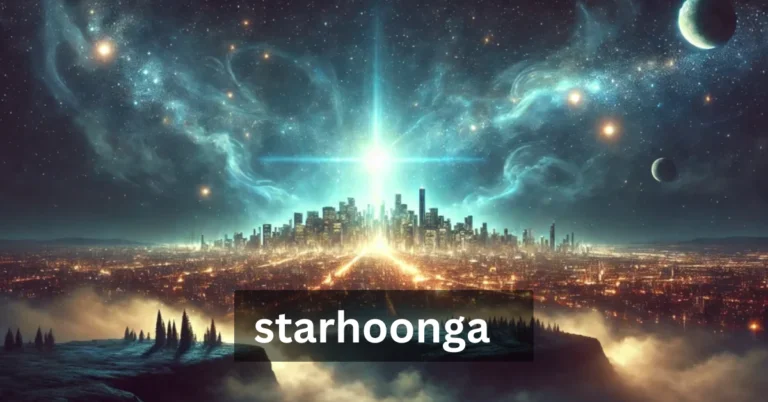Throughout human history, the night sky has always fascinated humanity. Stars have served as navigational guides, cultural symbols, and scientific puzzles. Among the countless celestial legends, Starhoonga stands out as a particularly intriguing name. Though the origins of Starhoonga remain unclear, the concept has taken on a life of its own, crossing between mythology, fiction, and contemporary astronomy discussions. This article delves into the meaning, cultural relevance, and evolving interpretations of Starhoonga — a name shrouded in cosmic curiosity.
Origins and Etymology
The term Starhoonga does not emerge from any established historical texts or classical mythologies directly. Instead, its origin appears to be rooted in a blend of speculative fiction, online storytelling, and community-driven mythology. Some sources suggest it originated in digital storytelling platforms, while others claim it to be a lost word from a nearly extinct tribal dialect, linked to the traditions of star worship in remote regions.
The word itself seems to combine two distinct parts — “Star”, representing celestial bodies, and “Hoonga”, a word with ambiguous meaning. Linguistic enthusiasts have proposed that Hoonga might stem from phonetic influences of Polynesian, South Asian, or even fictional alien languages. This fusion of the earthly and the otherworldly hints at the enigmatic nature of Starhoonga.
Cultural Interpretations
1. The Celestial Messenger
In several emerging folktales, especially those circulating in online creative writing forums, Starhoonga is described as a celestial entity — neither god nor alien, but a cosmic messenger. According to these stories, Starhoonga travels between galaxies, delivering vital information across civilizations. Unlike the angels or deities of Earth-bound faiths, Starhoonga has no fixed form, appearing instead as a cluster of lights or shimmering smoke drifting across the void.
These tales paint Starhoonga as a cosmic librarian, carrying the history of dead planets and the birth songs of stars. It is said that those who see Starhoonga in their dreams are destined to become visionaries, artists, or seekers of hidden knowledge.
2. A Warning Star
In some modern science fiction reinterpretations, Starhoonga is a doomsday beacon — a celestial anomaly that only appears in skies above planets on the verge of extinction. This version casts Starhoonga as an ominous harbinger, a star-like object growing larger with each passing night until the planet faces environmental, societal, or cosmic catastrophe.
This darker version has gained traction in contemporary climate fiction, where writers draw parallels between humanity’s growing ecological crisis and the appearance of ominous cosmic signs, such as Starhoonga.
3. The Guiding Light
On a more optimistic note, several spiritual movements have adopted Starhoonga as a symbol of cosmic guidance. For these groups, Starhoonga is not a literal star or entity but rather a metaphysical force — a beacon of intuition that helps people navigate personal and collective transformation. Similar to the North Star guiding ancient sailors, Starhoonga is said to guide souls seeking their purpose in the grand cosmic design.
Some spiritualists meditate under the night sky, seeking to connect with Starhoonga’s symbolic wisdom. They believe that those who resonate with Starhoonga are naturally attuned to cosmic energies and might possess heightened empathy, creativity, or precognitive insight.
Starhoonga in Modern Science and Astronomy
Although Starhoonga’s primary existence lies in the realm of myth and creative fiction, some scientific communities have embraced the term informally. Astronomers sometimes use “Starhoonga” to label unclassified stellar phenomena — temporary flickers of unexplained light, rogue celestial bodies, or data anomalies detected by deep-space telescopes.
For instance, in 2022, a team of amateur astronomers jokingly referred to an unexplained recurring radio signal as “The Starhoonga Pulse.” While the name was playful, it captured the public imagination, fueling online speculation that Starhoonga could be real — not as a being, but as a phenomenon yet to be understood.
This interplay between scientific curiosity and imaginative storytelling highlights how human beings naturally seek stories to explain the unknown. Whether it’s a strange blinking star or an unexplained burst of radio waves, the cosmos is always whispering secrets, and sometimes those secrets are named Starhoonga.
The Internet’s Role in Spreading the Legend
One reason Starhoonga has gained traction in recent years is the internet’s capacity for creating and amplifying shared mythology. Platforms like Reddit, Tumblr, and various storytelling websites have become breeding grounds for collaborative fiction, often blurring the lines between fantasy, conspiracy theory, and speculative science.
The legend of Starhoonga, much like Slender Man or The Backrooms, exists at the intersection of modern folklore and internet culture. Each contributor adds a new layer to the myth, transforming Starhoonga from a vague celestial curiosity into a multifaceted cosmic mystery.
What makes Starhoonga especially unique is its adaptability. It can be a starship, a spirit, a warning, a messenger, or even a metaphor for humanity’s search for meaning in a vast and indifferent universe. This flexibility ensures that Starhoonga’s story evolves with every generation that encounters it.
Starhoonga in Art and Popular Media
In addition to online fiction, visual artists, musicians, and filmmakers have started incorporating Starhoonga into their works. Some painters depict Starhoonga as a radiant figure weaving starlight into constellations, while others prefer abstract forms — a luminous blur representing both creation and destruction.
Several ambient music albums have taken inspiration from the concept of Starhoonga, crafting soundscapes meant to evoke the sensation of drifting through cosmic currents under its ethereal gaze. Filmmakers, particularly those working in indie science fiction, have begun weaving Starhoonga into their narratives, treating it as a universal constant — a cosmic enigma whose meaning shifts depending on the civilization interpreting it.
What Does Starhoonga Mean for Humanity?
At its core, Starhoonga represents something deeply human: our innate need to attribute meaning to the unknown. Every culture, from ancient Mesopotamia to contemporary internet communities, has looked to the stars and woven stories to explain what lies beyond our reach. Whether Starhoonga is a fictional creation, a metaphor for cosmic wonder, or a misunderstood natural phenomenon, it symbolizes our enduring fascination with the sky.
In an era where scientific discovery and existential uncertainty coexist, Starhoonga stands as a bridge between imagination and understanding. It reminds us that even in the face of vast cosmic silence, humanity will always search for stories — and sometimes, we’ll name them Starhoonga.
Conclusion
Though its origins are shrouded in ambiguity, Starhoonga has become a cultural touchstone for the 21st century’s evolving relationship with the cosmos. From online forums to astronomical discussions, spiritual movements to speculative fiction, Starhoonga is both a story and a symbol — one that reflects our hopes, fears, and endless curiosity about the universe.
As we continue to explore the stars, who knows? Perhaps one day, science will discover something so strange, so wondrous, that the only name fitting would be Starhoonga.

